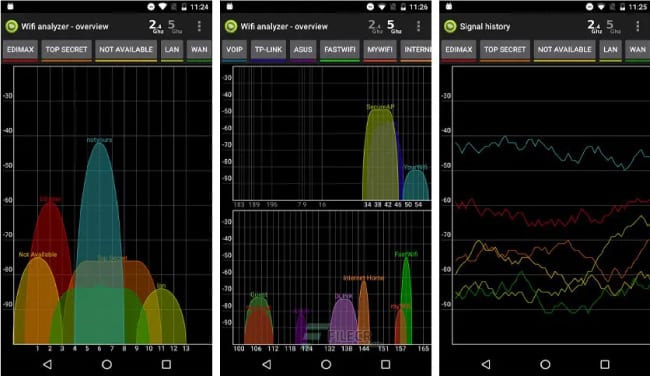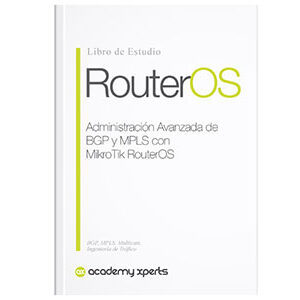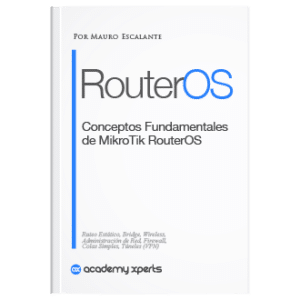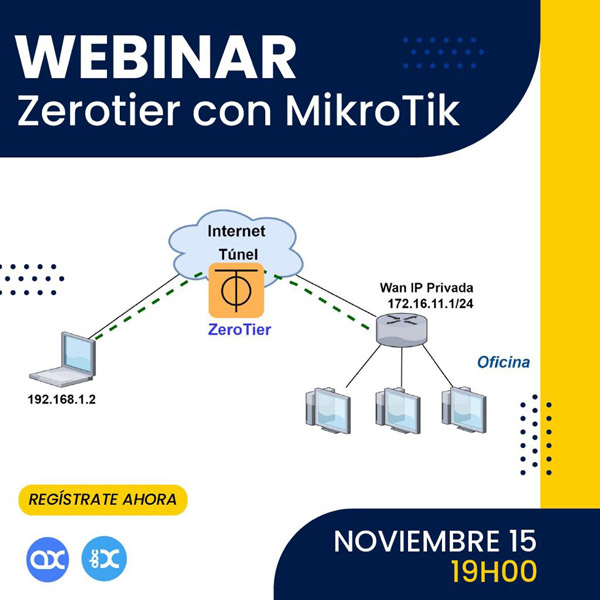Wireless Measurements: A Fundamental Pillar for Efficient Networks
- Luis Patricio Cuadrado Tucker
- No comments
- Share this article
Wireless measurements refer to the collection of data and evaluation of signals or phenomena that are transmitted wirelessly, that is, through the air without the need for physical cables.
This field covers various areas and technologies, and wireless measurements are essential for the development, maintenance and improvement of communication systems and wireless networks.
At the end of the article you will find a small test that will allow you assess the knowledge acquired in this reading
Most common measurements
Some of the most common wireless measurements include:
- Signal Strength: Measures the strength of the wireless signal at a specific point. It can be expressed in decibels (dB) and is crucial to evaluate the quality of the connection.
- Bandwidth (Bandwidth): Indicates the maximum data transfer capacity of a wireless connection. It is measured in hertz (Hz) or kilohertz (kHz), megahertz (MHz) and gigahertz (GHz).
- Delay (Latency): It is the time it takes for the signal to travel from the sender to the receiver. Low latency is essential in real-time applications such as video conferencing and online gaming.
- Jitter: It refers to the variability in signal delay. Low jitter indicates a more stable and predictable transmission.
- Signal-to-Noise Ratio (SNR): It measures the ratio between signal power and background noise power. A high SNR is desired for reliable communication.
- Interference: Evaluate the presence of other signals that may affect the quality of communication. This could be interference from nearby electronic devices or signals from other wireless networks.
- Channel Quality: Analyzes the conditions of the communication channel, including possible obstacles, reflections and attenuations that may affect the signal.
- Spectral Efficiency: It measures how much information can be transmitted per unit of bandwidth. Higher efficiency is desirable to maximize channel capacity.

Importance of wireless measurements.
These measurements are essential in the design, deployment and maintenance of wireless networks, whether for mobile communications, Wi-Fi, Bluetooth or other wireless technologies. Here are some key reasons why wireless measurements are important:
- Performance Optimization: Wireless measurements allow you to evaluate and optimize the performance of wireless networks and devices. Knowing signal quality, transmission speed, latency and other parameters helps improve the efficiency and reliability of connections.
- Problem resolution: When problems arise in wireless communications, measurements are essential to identify the cause. They can help locate interference, diagnose connectivity issues, and address any other factors that affect performance.
- Network Design: In the wireless network design process, measurements are critical to determining the optimal placement of access points, antennas, and other components. This helps maximize coverage and minimize interference.
- Spectrum Management: The electromagnetic spectrum is a limited and shared resource. The measurements help to efficiently manage the spectrum, avoiding frequency conflicts and optimizing the use of available channels.
- Standards Compliance: Many wireless communication standards, such as Wi-Fi and 4G/5G, have specific performance requirements. Measurements are essential to ensure compliance with these standards and interoperability between devices.
- Safety: Wireless measurements also play a role in network security. They can help detect intrusions or unauthorized activities, and evaluate the strength of implemented security protocols.
- Capacity Planning: Knowing the current load on a wireless network and forecasting future demand is vital to effective capacity planning. Measurements provide information on resource usage and allow infrastructure to be adjusted to meet user needs.
- User Experience: Good quality of service in wireless environments is crucial for user satisfaction. Measurements help ensure a positive experience by monitoring and improving signal quality and connection speed.
Wireless measurements are essential to ensure efficient and reliable operation of wireless communication technologies. They help solve problems, optimize performance and maintain quality of service, which is crucial in a world increasingly dependent on wireless communications.
Factors affecting wireless measurements
Wireless measurements can be affected by several factors that influence signal quality and accuracy of results. Here are some ways the most common wireless measurements can be affected:
- Electromagnetic Interference: Other electronic devices, electrical equipment, and nearby radio signals can cause electromagnetic interference that affects signal quality and measurement accuracy.
- Signal Attenuation: Physical obstacles such as walls, buildings, trees or other elements can attenuate the wireless signal, reducing its strength and affecting the measurement of signal strength.
- Reflections and Multipath: Signal reflections from metal surfaces and multipath effects can cause interference and distort the signal, affecting the quality and accuracy of measurements.
- Spectrum Congestion: In environments with many wireless networks, spectrum congestion can lead to interference and competition for bandwidth, affecting performance and data transfer rate measurements.
- Changes in the Environment: Weather conditions, such as rain, snow, or changes in temperature, can affect the propagation of radio waves and therefore influence the quality of the wireless signal.
- Variable Network Loads: On shared networks, variability in network load due to changes in user demand can affect data rate and latency measurements.
- Hardware Limitations: The quality of measurement devices, such as antennas, spectrum analyzers, and other instruments, can influence the accuracy of measurements.
- Incorrect Configurations and Adjustments: Misconfigurations of devices, such as incorrect frequency channels or inappropriate power settings, can negatively affect measurements.
- Human activities: The presence of people moving in an area can temporarily affect wireless signal quality, especially in motion-sensitive applications such as virtual reality.
- Environmental Noise: Ambient noise, whether natural or generated by external sources, can interfere with the wireless signal and affect measurements.
To minimize these effects, it is crucial to perform measurements under controlled conditions whenever possible, follow good network design practices, use high-quality measurement tools, and understand the factors that can influence wireless measurements. Furthermore, proper interpretation of the results is also essential to take into account possible interferences and limitations.
Recommendations when performing wireless measurements
To improve wireless measurements and obtain more accurate and reliable results, several practices and strategies can be followed. Here are some suggestions:
- Conduct a Site Survey: Before implementing a wireless network, carrying out a site survey helps understand the environment and identify possible obstacles, interference and areas with low coverage. This allows you to plan the optimal placement of devices and improve signal quality.
- Spectrum Management: Monitor the electromagnetic spectrum to identify and avoid interference. Selecting less congested frequency channels can improve wireless network performance.
- Optimize Device Settings: Properly adjust the settings of wireless devices, such as access points and routers. This includes channel selection, transmit power and other parameters to minimize interference and optimize performance.
- Use Quality Antennas: Choose antennas appropriate for the application and environment. High-quality antennas designed for specific conditions can improve signal coverage and efficiency.
- Avoid Obstructions: Place wireless devices in locations where there are fewer physical obstructions. Minimizing the presence of walls, furniture or other obstacles can improve signal propagation.
- Update Firmware and Drivers: Keep wireless device firmware and drivers up to date. Updates often include improvements to stability, efficiency, and compatibility.
- Use Diagnostic Tools: Employ network analysis and diagnostic tools to identify problems and track performance in real time. This makes it easier to proactively identify and resolve issues.
- Implement Wireless Security: Ensure that the wireless network is protected from unauthorized access. Proper security helps prevent malicious interference and maintain consistent performance.
- Perform Performance Tests: Perform periodic performance tests to evaluate transfer speed, latency, and other parameters. This helps identify potential performance degradations and take corrective action.
- Staff training: Train the personnel in charge of maintaining and operating the wireless network. Proper knowledge about wireless technologies and best practices contributes significantly to improved performance.
- Consider Emerging Technologies: Evaluate and adopt new wireless technologies that can offer better performance and efficiency, such as improvements in Wi-Fi standards, the deployment of 5G networks, among others.
By implementing these strategies, organizations can improve the quality of wireless measurements and ensure more consistent and reliable performance on their wireless networks.
Summary
Wireless measurements are essential for evaluating and optimizing the performance of wireless networks, but several factors can affect their accuracy.
To improve these measurements, it is essential to perform a detailed analysis of the environment through site surveys, efficiently manage the electromagnetic spectrum to avoid interference and optimize device configuration, such as proper channel selection and transmission power.
Additionally, using quality antennas, regularly updating firmware, implementing security measures, and training personnel are key practices. These strategies make it possible to minimize obstacles, identify interference and improve signal quality, thus contributing to a more efficient and reliable deployment of wireless networks.
Brief knowledge quiz
What do you think of this article?
Do you dare to evaluate your learned knowledge?
Recommended book for this article
Related Posts
- Wi-Fi 6 (802.11ax): The Future of Wireless Connectivity
- Digital Modulations: How They Work and Why They Are Important
- Importance of Free Space Path Loss in the design and planning of radio links
- OSPF: Optimizing routing in networks through Single Area and Multi Area
- MikroTik and Wireless Authentication: Understanding 'Allow Shared Key'
Related Posts
- Wi-Fi 6 (802.11ax): The Future of Wireless Connectivity
- Digital Modulations: How They Work and Why They Are Important
- Importance of Free Space Path Loss in the design and planning of radio links
- OSPF: Optimizing routing in networks through Single Area and Multi Area
- MikroTik and Wireless Authentication: Understanding 'Allow Shared Key'














